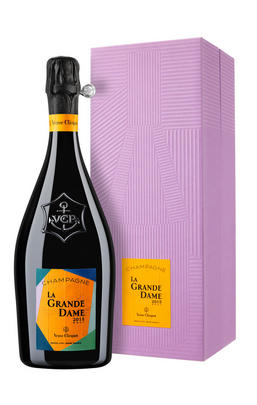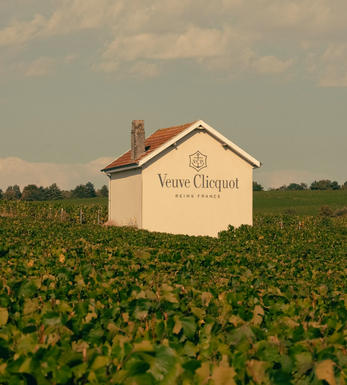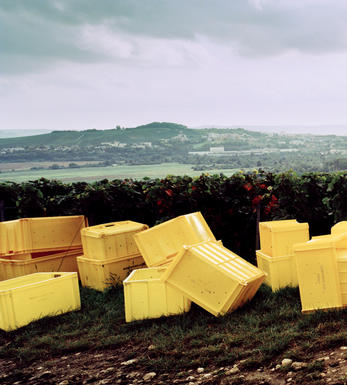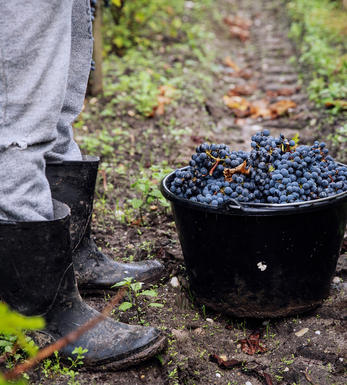
2015 Champagne Veuve Clicquot, La Grande Dame, Brut

Critics reviews
2015 shows off the sunny fruits of the year with more grip and intensity than the 2008 and 2012. Fleshy orange, red pear, dried pineapple and chewy grapefruit peel build on a firmly structured frame, although there is a suppleness of nougat and acacia honey lurking in the middle that promises to emerge with a little patience. The bustling energy of the vintage is sitting proud for now, bitter almond and fruit skin building to an energising close despite the moderate acidity. An edition that will perform especially well at the table.
Drink 2023 - 2033
Tom Hewson, Decanter.com (March 2023)
A soft colour and gentle mousse; the nose is at first flinty-reductive, oyster shell and green apple to the fore, red fruit hitherto intriguingly absent. The floral notes are next to appear; jasmine and a touch of honeysuckle; delicate and upstanding.
A little aeration and a little more by way of revelation; a citric foundation, then a slow build of honey, nutmeg, and just a whisper of ginger. Subtle power, la force tranquille; the dance of the seven veils is well under way, this promising plenty of drama to come and a more than happy ending.
Simon Field MW, The World of Fine Wine (March 2023)
About this WINE

Veuve Clicquot
Philippe Clicquot-Muiron established Veuve Clicquot in 1772. However, it was Phillipe`s daughter-in-law, Nicole-Barbe Clicquot, who really laid the foundations of the modern company. She was one of the great innovators - it was she who invented remuage in the early 19th century. Now it is part of the LVMH group. The Non-Vintage Brut is a blend of 55% Pinot Noir, 30% Chardonnay and 15% Pinot Meunier. It has a nose of white fruits and freshly baked bread and is fresh and balanced on the palate. The vintage wines are similar in character but with more depth of fruit and more structure. La Grande Dame, first made in 1969, is a rich, smooth and finely textured Champagne that simply oozes class and breeding.

Brut Champagne
Brut denotes a dry style of Champagne (less than 15 grams per litre). Most Champagne is non-vintage, produced from a blend from different years. The non-vintage blend is always based predominately on wines made from the current harvest, enriched with aged wines (their proportion and age varies by brand) from earlier harvests, which impart an additional level of complexity to the end wine. Champagnes from a single vintage are labelled with the year reference and with the description Millésimé.
Non-vintage Champagnes can improve with short-term ageing (typically two to three years), while vintages can develop over much longer periods (five to 30 years). The most exquisite and often top-priced expression of a house’s style is referred to as Prestige Cuvée. Famous examples include Louis Roederer's Cristal, Moët & Chandon's Dom Pérignon, and Pol Roger's Cuvée Sir Winston Churchill.
Recommended Producers : Krug, Billecart Salmon, Pol Roger, Bollinger, Salon, Gosset, Pierre Péters, Ruinart

Champagne blend
Which grapes are included in the blend, and their proportion, is one of the key factors determining the style of most Champagnes. Three grapes are used - Pinot Noir, Chardonnay and Pinot Meunier.
26% of vineyards in Champagne are planted with Chardonnay and it performs best on the Côtes des Blancs and on the chalk slopes south of Epernay. It is relatively simple to grow, although it buds early and thus is susceptible to spring frosts. It produces lighter, fresher wines than those from Burgundy and gives finesse, fruit and elegance to the final blend. It is the sole grape in Blancs de Blancs, which are some of the richest long-lived Champagnes produced.
Pinot Noir accounts for nearly 40% of the plantings in Champagne and lies at the heart of most blends - it gives Champagne its body, structure, strength and grip. It is planted across Champagne and particularly so in the southern Aube district.
The final component is Pinot Meunier and this constitutes nearly 35% of the plantings. Its durability and resistance to spring frosts make the Marne Valley, a notorious frost pocket, its natural home. It ripens well in poor years and produces a soft, fruity style of wine that is ideal for blending with the more assertive flavours of Pinot Noir. Producers allege that Pinot Meunier lacks ageing potential, but this does not deter Krug from including around 15% of it in their final blends.


Buying options
Add to wishlist
Description
Pinot Noir is now at the core of La Grande Dame blends at around 90%. It was a bold move at the time and has paid off. The wine expresses energy and elegance. Subdued at first, it blossoms on the nose. Grapefruit, lemon and blood orange aromas are followed by honey, almonds and warm bread on the mid palate. This is very much a Champagne to appreciate slowly. As you taste your final sip, that’s when you discover its full complexity.
Drink 2025 - 2040
Joshua Friend, Senior Account Manager, Berry Bros. & Rudd (April 2023)
*Please note that the colour of the gift box may vary.
wine at a glance
Delivery and quality guarantee